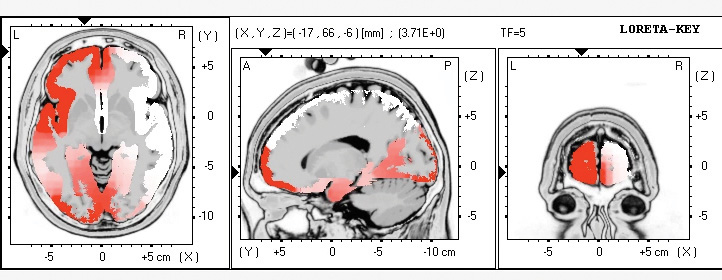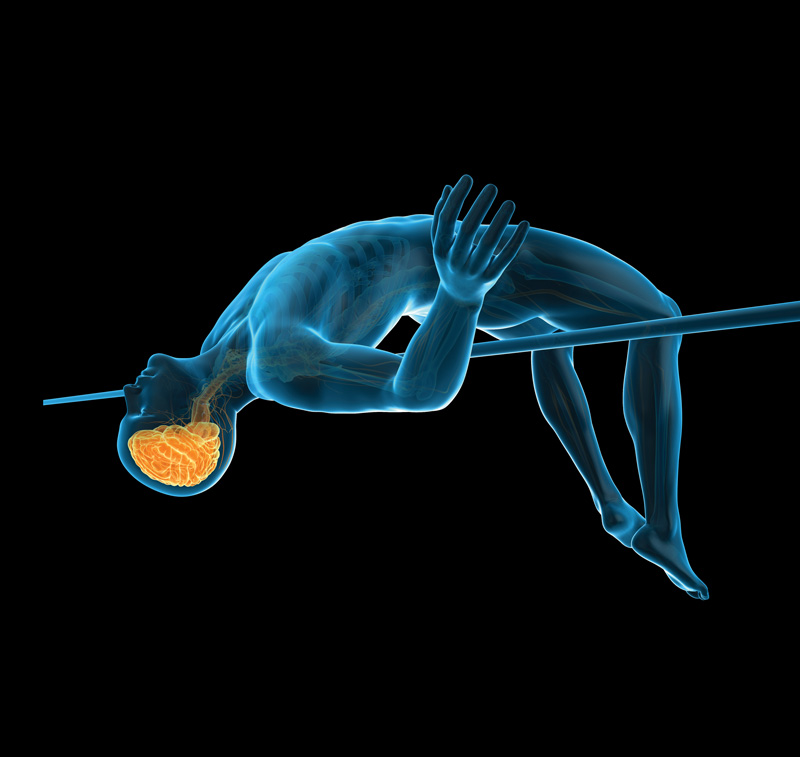If you are an athlete and want to make sure that your brain is performing at its best, or you play a sport that has a possibility of concussive injuries, baseline testing at the beginning of the season is a must. At the NeuroEdge Brain Performance Center, we strive to bring athletes, students, executives, and anyone who wants to improve their overall cognitive well-being, the very latest in brain performance enhancement techniques.
Triple Baseline Testing
The first step in improving brain performance is to determine how the brain is currently performing with triple baseline testing. This baseline testing is essential to use as a comparison if an injury occurs during the season, baseline testing helps to guide treatment and provides information about when it is best to return to play.
As awareness of concussions has grown in the past several years, there are more and more teams and schools that require concussion education, and some form of baseline testing. Over the many years that I have been treating traumatic brain injuries, I have found that functional brain imaging, using EEG is one of the most sensitive tools to assess brain function. I encourage all athletes to have a baseline EEG.
To obtain even more information on how the brain is performing we test cognitive performance using CNS Vital signs, a computerized cognitive performance test, as well as measuring vestibular function with computerized balance testing. Using this Triple Baseline Testing approach, we have the most comprehensive and sensitive means of assessing one’s brain function and performance.
EEG Baseline
EEG is an acronym for ElectroEncephalogram and it is the measurement of the brain’s electrical activity. It is indeed a functional assessment of how the brain’s neuronal networks communicate. Traditionally, EEGs measure just the outer surface of the brain’s activity, but with newer advances, called sLORETA, we can image deeper brain structures electrical activity as well. The cutting-edge sLoreta technology has capabilities to measure, in real-time, electrical function deep within the brain’s cortex. By using this advanced EEG sLoreta technology, we can evaluate whether an injury has occurred, as well as whether brain wave patterns associated with metabolic imbalances and overall brain dysregulation are present.
The first thing we do is place electrodes on the patient’s scalp using a unique cap. A conductive gel is injected into the cap electrodes so that the subtle electrical signals from the brain can be picked up. These signals are amplified and processed by the computer where we see the brain waves projected on the screen. Next, we remove all the artifacts created by muscle and eye movements, so we get a clean EEG.

With a sLoreta image, we can see how the brain behaves in real-time, and compare it to a normative database. We can even utilize a patient’s past brain wave baseline as a comparison after an injury to see how far their brain has deviated from their pre-injured brain. This sLoreta imaging is a great way to tell if one’s brain has healed.
In order to better understand how various brain-wave states relate to the statistical norms in the population, a qEEG, or Quantitative EEG is performed. Using the artifact-free raw EEG data, special mathematical calculations are made to calculate the average power (amplitude), frequency, and communications between the networks. These are then seen as standard deviations above or below the normative databases based on the age and gender of the patient. This information is displayed using a brain map.
Quantitative analysis gathered from the qEEG’s are most easily displayed by using a brain map. Brain maps can visually show where a person may have a dysregulation, where the amplitude, height or power of a brain wave is too high or too low, or whether the absolute frequency or speed of the wave, is at a faster or slower range. We are able to look at how certain areas of the brain communicate. Additionally, detailed patient questionnaires help to confirm if these areas of dysregulation are contributing to the patient’s symptoms.
CNS Vital Signs
The next baseline test involves taking a computerized neurocognitive test. This neurocognitive test will measure one’s overall cognitive performance as well as details as to various aspects of memory, psychomotor speed, attention, and social acuity. We utilize CNS Vital Signs, one of the most researched and sophisticated tests currently available. CNS Vital signs is used by the US Military Veterans hospitals and worldwide by the university and the pharmaceutical industry to assess neurocognitive function. A patient takes this test in the office, or if appropriate, at home. It usually takes between 30-45 minutes, depending on the number of areas tested.
The CNS report allows us to see what areas a person is either performing above average, average, low, or very low when compared to the normative database. When an injury occurs there is a disruption in neuronal network communication which is seen on the EEG and this will affect brain performance. There are often excellent correlations with the brain map generated by the EEG and the CNS Vital Sign testing results.
Balance Track Testing
The third test I like to baseline as part of our comprehensive Triple-Test Baselining is Balance. We use Balance Tracking Systems ultrasensitive force plate to see how well a patient’s balance compares to the normative database. If a concussion occurs, often one’s balance is affected. However, this may give us information about people’s risk for falling in all age groups.
After obtaining the patient’s height, weight, and age, they place their feet on the Balance Plate shoulder-width apart, eyes closed and hands on their hips. First, there is a preliminary trial test that is performed to get one used to what they will need to do, and then three more 20-second tests are performed. Finally, the tests are averaged out, and a report generated. Altogether, this test takes about 2-3 minutes.
As you can see, The NeuroEdge Triple Baseline Testing is very comprehensive and can help us know how well your brain is performing. This information is essential if you want a baseline comparison in case of future injury and is the first place to start when figuring out a customized brain performance enhancement program.
Should you or your child experience a head hit, concussive injury or other brain trauma we use numerous therapies to aid in recovery. Naturally every case is different, our treatments are customized to the needs of the specific individual.
Dr. Adam Breiner practices naturopathic medicine at Whole-Body Medicine in Fairfield, CT. Patients from Connecticut and surrounding states seek his care for Lyme Disease, Brain Injuries, such as stroke, concussions, TBI, as well as enhanced Brain Performance. Among the many neurotherapies we use are: Hyperbaric Oxygen Therapy, Pulsed Magnetic and Transcranial Electrical Stimulation, Neurofeedback, Platelet Rich Plasma (PRP), Altitude Contrast Training, Photobiomodulation, Homeopathy, Nutritional support, Nutraceuticals and Systemic Detoxification. Visit the Neuroedge Brain Performance Center at: www.wholebodymed.com or to schedule an appointment call 203-371-8258 ext. 2.
